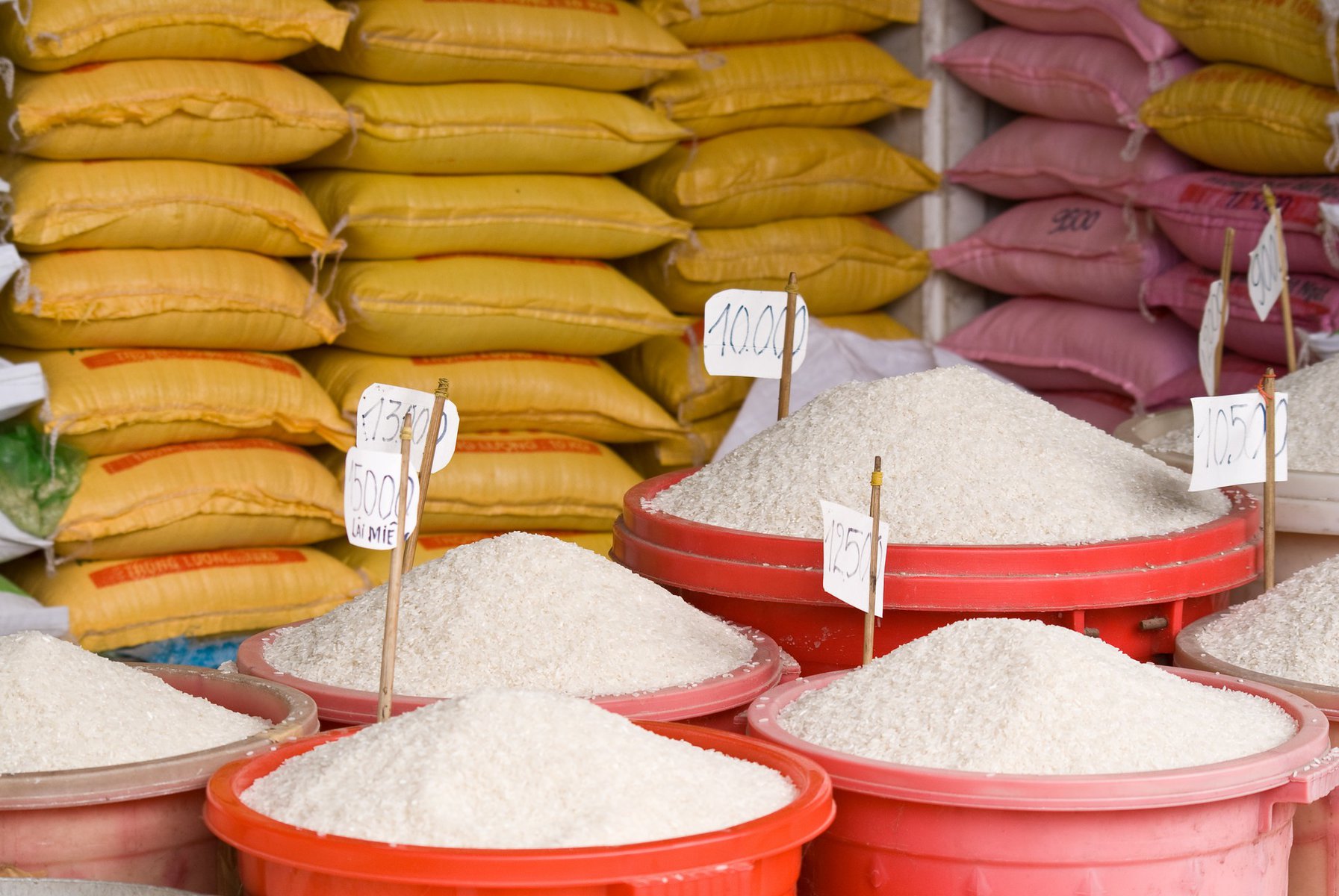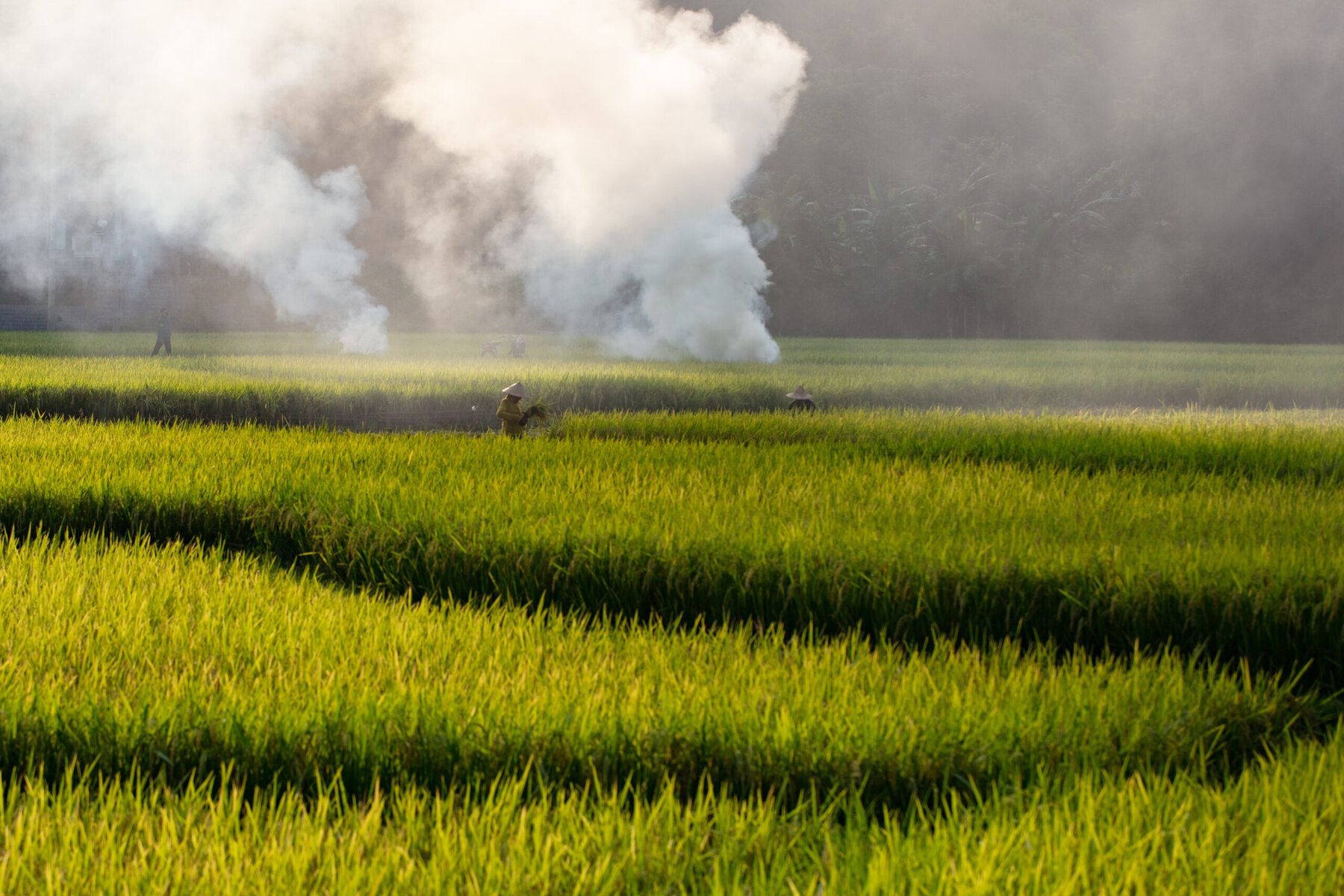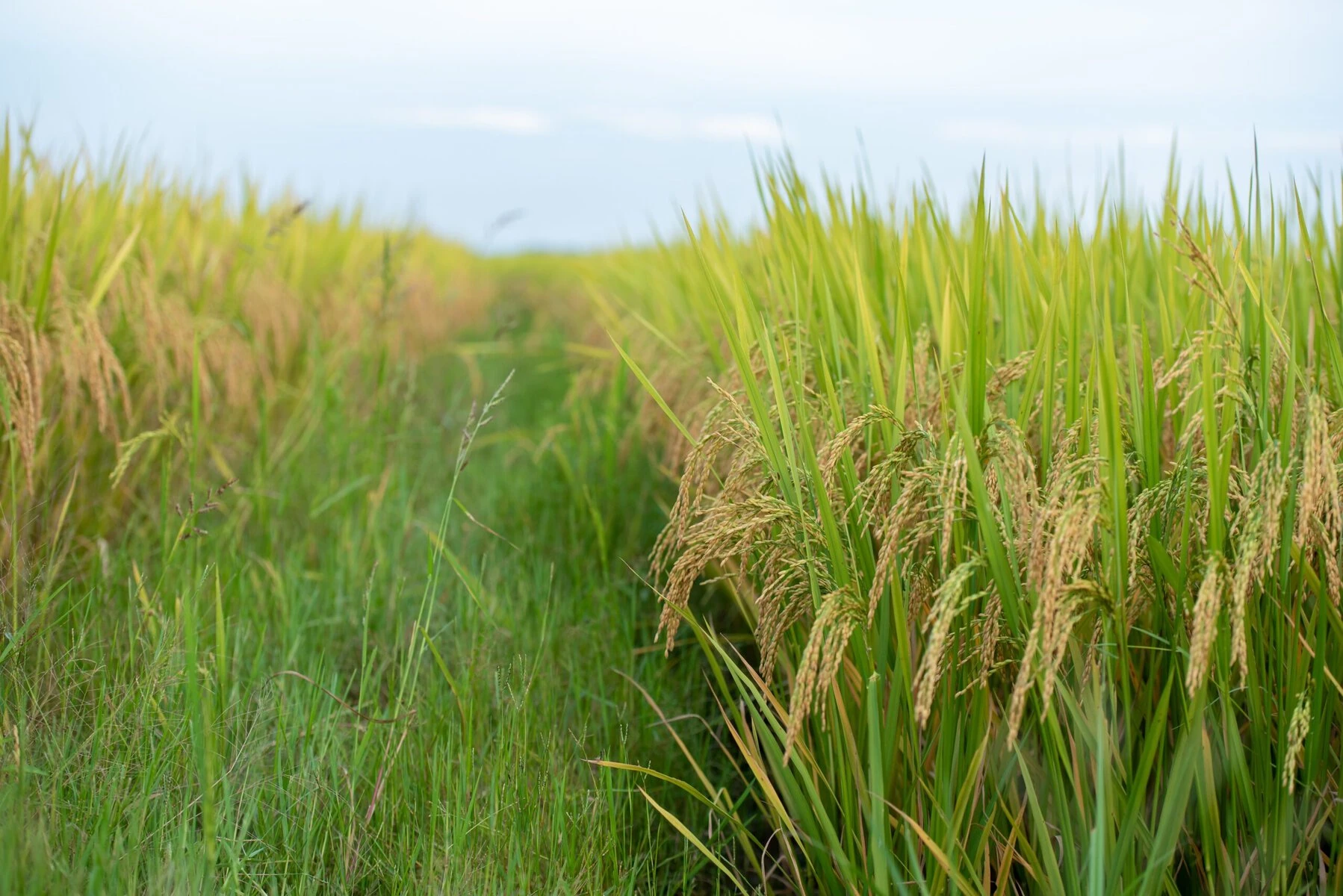Vietnamese rice farmer Van Dinh Nguyen is hardly on social media, but he has become an influencer in a face-to-face sense in his own community.
Nguyen has encouraged 1,645 fellow rice farmers to take up more sustainable methods through a “train-the-trainer” program rolled out over the past three years by the Viet Nam Farmers Union (VNFU), in a bid to overcome farmers’ fears that adopting greener practices would come at a cost to their output and livelihoods.
Nguyen was one of around 20 influential and motivated farmers across six communities the VNFU selected to be trained in how to change their approach to rice farming in three key ways: reducing the burning of crop residue, offering alternatives to chemical fertilizer, and improving water management.
“Before the project was implemented, I saw that most local farmers burned their rice straw and stubble after the harvest, excessively used chemical fertilizers and continuously had rice plants flooded throughout the crop,” says Nguyen. He is the chairman of the VNFU Nghia Hung local branch in the Bac Giang province, in the country’s northeast.
“I understand that helping the farmers to shift to more sustainable farming is important. So, when I was invited to be part of the train-the-trainer program to increase environmentally friendly rice cultivation, I was very eager because I heard that this program would help to propagate and mobilize the farmers to apply more sustainable techniques, contributing to reducing greenhouse gas emissions.”
Rice is both a staple food and backbone of Vietnam’s farming industry. With over 15 million smallholder farmers working 7.12 million hectares of land, Vietnam is the world’s third largest rice exporter. Rice accounts for 15 percent of the country’s total greenhouse gas emissions, so sustainability efforts in the rice industry are a key part of the Vietnamese government’s strategy to reach net zero emissions by 2050. Moving to low carbon rice production, according to the World Bank, offers significant potential for Vietnam to meet that goal.
For every ton of harvested rice, over a ton of rice stubble and straw is left behind. Burning it has been a traditional practice in rice farming, but every ton burned pollutes the air with nearly 1.5 tons of carbon dioxide. The use of chemical fertilizer, which became popular in the 1980s thanks to economic pressures prompting farmers to prioritize higher yields, has also led to soil acidity and reduced soil fertility, as well as air, water and soil pollution.
Meanwhile, flooding rice fields with water was long considered the way to create an optimal environment for rice plants. However, an “alternate wet and dry” (AWD) irrigation method, in which farmers switch between flooding a field and letting water levels drop, rather than continuous flooding, started becoming popular in the early 2000s. AWD irrigation has been shown to use 38 percent less water than continuous flooding, and can reduce methane emissions by up to 85 percent since pumping in less water requires less fuel. Researchers have also found AWD irrigation increases water productivity, or crop yield by cubic meter of water consumption, by around 17 percent compared with continuous flooding. With continuous flooding, up to 51 percent of water is lost through seepage.
VNFU’s train-the-trainer farmer “influencer” program, devised in partnership with behavioral science consultancy Influence At Work, taught motivated farmers like Nguyen sustainable methods such as using animal manure to compost rice straw and stubble into organic fertilizer to replace chemical fertilizers. The program also advocated for the “alternate wet and dry” irrigation method.
Nguyen and other trainers then set up demonstration plots using the new methods, next to a plot of crops grown with old methods, to highlight the differences and debunk misconceptions about how difficult these methods would be to introduce. They also gave talks at events and festivals to spread the word.
To add an extra element to the program — and give it a better chance of sustained long-term behavior change, according to Influence At Work’s psychologists — a leaderboard was established to promote friendly competition between regions, as part of a “gamified” system where farmers would move up levels by completing specific program activities, like learning and implementing a specific method, and sharing those with others.

So far, so good. When VNFU and Influence At Work surveyed the rice farmers in late 2023, 90 percent of those involved in the project said they had reduced crop burning, compared with 60 percent of farmers surveyed who were not part of the program. Of the farmers that were burning all or most of their rice straw and stubble before the program, 57 percent reported no burning afterwards, compared with 17 percent of farmers not in the program. This equated to nearly 4523 hectares of land being farmed without burning — a total of 67 percent of land owned by farmers in the program.
Nearly half of project farmers reduced their chemical fertilizer use, compared with 22 percent of farmers not in the program — equating to nearly 26.5 tons less. Meanwhile, 33 percent of farmers who previously had never applied “alternate wet and dry” irrigation used the method following the program, compared to only 12 percent of farmers not in the program. Around two million farmers are applying at least one technique, according to the VNFU.
Crushed by negative news?
Sign up for the Reasons to be Cheerful newsletter.
Hai Hau Le Thi, who has been farming rice for more than 30 years in the Nghia Hung area, is one of those success stories, having completely stopped burning crop residue and using chemical fertilizer on his land. Now, he converts his rice straw and stubble into organic fertilizer to nourish his crop. And rather than flood his fields, he now uses the AWD method, which he says actually helps the plants’ roots penetrate deeply into the ground and absorb organic matter from deep within the soil.
“These changes have helped our family gain high yields with better rice quality, while reducing input costs by saving on seeds, water and pesticides,” says Le Thi.

“Previously, people in my village often burned their crop residues indiscriminately. Since participating in the project, currently, there is no more burning of rice straw and stubble because they have used microbial products to treat the straw, before transplanting it to gain organic fertilizer from it,” he adds.
“It is necessary to switch to environmentally friendly rice cultivation, not only for a better income, but also for the better health of our family and the community, as well as to minimize natural disasters due to climate change.”
Influence At Work principal behavioral scientist, Eloise Copland, worked closely with VNFU representatives to develop and roll out the train-the-trainer program, to come up with solutions that people would be most likely to adopt.
There are a range of sustainable farming methods that can be encouraged, says Copland, such as rice intensification, which involves the planting of organic seeds in a specific arrangement. This can be costly, though, and difficult to follow, which is why it wasn’t among the methods chosen for the program.
“We collaborated with farming experts and local partners with a good understanding of the local communities to identify easier to adopt behaviors that also maintained farmers’ livelihoods,” says Copland.
“These behaviors reduce air pollution, minimize greenhouse gases from microbes present in flooded fields, reduce the impact of chemical fertilizer on the soil quality, and limit water wastage. We also conducted research with local communities to understand the barriers to adopting these methods, and how to best motivate farmers.”
Empowering the most passionate local farmers to share their learnings with their peers has made teaching and learning more of a democratic movement. The more authoritative style of teaching new farming methods, through the formal education programs the VNFU had run before, had worked in getting farmers to learn about new methods, but were time- and cost-intensive — and didn’t necessarily lead to long-term change.
The approach of selecting the most motivated and influential individuals to be trained in — and to champion — the methods resulted in effective peer-to-peer learning, says Copland.
“Farmers were able to increase their confidence to implement key methods. We spoke their language in the sense that they are time- and money-poor, and typically farm using methods that are easy to deploy,” she adds.
“We also created a sense of community around the methods, with momentum building around the idea that others are doing it too. We also utilized community events and promotional material as it was important that the methods were not just taught, but spread and normalized throughout the community.”

Inspired by the results, the VNFU plans to find more farmers like Nguyen to sign up for the train-the-trainer program as they expand it to five more provinces this year. The ambition is to eventually make the program available nationwide.
For Nguyen, ensuring rice farming has a positive impact on the environment has come down to not just changing the way things have been done for years, but helping people accept that doing things differently can be beneficial.
“The most impactful thing local farmers learned was to change their mindset,” he says.
“To ensure the sustainability of Vietnamese agriculture, it is necessary to raise farmers’ awareness and help them to move away from the outdated thoughts of ‘the more fertilizer, the better the plant’ or ‘continuous flooding.’ I hope that more farmers will be able to have access to this program.”
The post How ‘Farmfluencers’ Are Making Vietnam’s Rice Fields More Sustainable appeared first on Reasons to be Cheerful.




